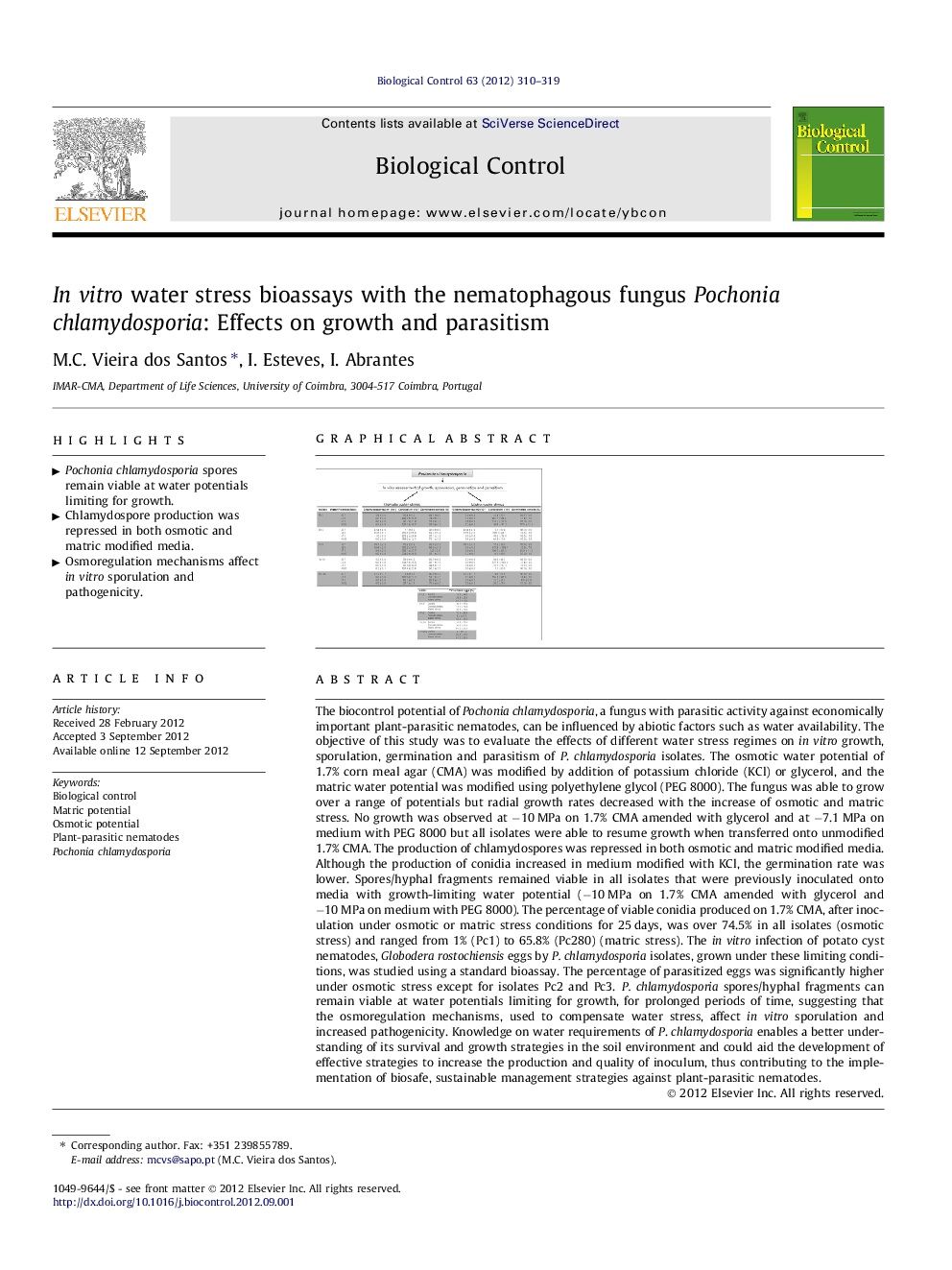| کد مقاله | کد نشریه | سال انتشار | مقاله انگلیسی | نسخه تمام متن |
|---|---|---|---|---|
| 6372751 | 1321058 | 2012 | 10 صفحه PDF | دانلود رایگان |

The biocontrol potential of Pochonia chlamydosporia, a fungus with parasitic activity against economically important plant-parasitic nematodes, can be influenced by abiotic factors such as water availability. The objective of this study was to evaluate the effects of different water stress regimes on in vitro growth, sporulation, germination and parasitism of P. chlamydosporia isolates. The osmotic water potential of 1.7% corn meal agar (CMA) was modified by addition of potassium chloride (KCl) or glycerol, and the matric water potential was modified using polyethylene glycol (PEG 8000). The fungus was able to grow over a range of potentials but radial growth rates decreased with the increase of osmotic and matric stress. No growth was observed at â10Â MPa on 1.7% CMA amended with glycerol and at â7.1Â MPa on medium with PEG 8000 but all isolates were able to resume growth when transferred onto unmodified 1.7% CMA. The production of chlamydospores was repressed in both osmotic and matric modified media. Although the production of conidia increased in medium modified with KCl, the germination rate was lower. Spores/hyphal fragments remained viable in all isolates that were previously inoculated onto media with growth-limiting water potential (â10Â MPa on 1.7% CMA amended with glycerol and â10Â MPa on medium with PEG 8000). The percentage of viable conidia produced on 1.7% CMA, after inoculation under osmotic or matric stress conditions for 25Â days, was over 74.5% in all isolates (osmotic stress) and ranged from 1% (Pc1) to 65.8% (Pc280) (matric stress). The in vitro infection of potato cyst nematodes, Globodera rostochiensis eggs by P. chlamydosporia isolates, grown under these limiting conditions, was studied using a standard bioassay. The percentage of parasitized eggs was significantly higher under osmotic stress except for isolates Pc2 and Pc3. P. chlamydosporia spores/hyphal fragments can remain viable at water potentials limiting for growth, for prolonged periods of time, suggesting that the osmoregulation mechanisms, used to compensate water stress, affect in vitro sporulation and increased pathogenicity. Knowledge on water requirements of P. chlamydosporia enables a better understanding of its survival and growth strategies in the soil environment and could aid the development of effective strategies to increase the production and quality of inoculum, thus contributing to the implementation of biosafe, sustainable management strategies against plant-parasitic nematodes.
Highlights⺠Pochonia chlamydosporia spores remain viable at water potentials limiting for growth. ⺠Chlamydospore production was repressed in both osmotic and matric modified media. ⺠Osmoregulation mechanisms affect in vitro sporulation and pathogenicity.
Journal: Biological Control - Volume 63, Issue 3, December 2012, Pages 310-319